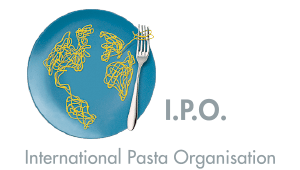PASTA IS A GOOD SOURCE OF ENERGY
FOR PRO AND AMATEUR ATHLETES
Pasta is an especially suitable food for people who exercise or compete in sports. It not only provides carbohydrates, but is a source of protein and is easy to digest as well. Sports nutrition experts agree that pasta is a better food choice for athletes than white bread, rice or potatoes. The reason? It releases energy into the body slowly and more efficiently.
When we participate in sports or work out, our bodies require the proper fuel that allows us to perform. Pasta is a perfect carbohydrate-rich food for athletes and active people to consume.
While eating pasta won’t turn you into an elite athlete, it could help you perform better when you engage in your favorite sport or physical activity.
Here’s why:
- Pasta is a slow-burning, complex carbohydrate, which serves as the body’s main fuel source. It metabolizes to glucose and produces long-lasting energy, particularly during athletic activity
- It’s easily digestible and doesn’t cause gastrointestinal distress if eaten before a race or high-intensity workout[1]
- Elite athletes know a balanced, healthful diet is key to maintaining their performance levels. Combining complex carbohydrates, like pasta, with lean proteins, low to moderate fat intake and good hydration will result in success [2]
Whether you are already athletic and looking to up your game or are just beginning the journey toward getting fit, what you put into your body plays a big role in the performance you get out of it.
Pasta & Sports:
- A healthy diet is one that provides us with at least 50 percent of our daily energy intake in the form of carbohydrates, such as pasta. The consensus view on an athlete’s or active person’s diet is that about 60 percent of their daily energy intake should come from carbohydrates. Pasta is an excellent source of complex carbohydrates, which helps sustain energy.
- There is a beneficial effect in the way pasta is made. The process of manufacturing reduces its glycemic response; few people realize pasta has a low glycemic index (GI). Surprisingly, pasta’s GI is even lower than oatmeal and quinoa. Because of this, it does not typically cause blood sugar levels to rise quickly.
- While some athletes are going gluten-free even if they aren’t gluten sensitive or suffer from celiac disease, a recent study showed no effect of a gluten-free diet for athletes who had no clinical necessity for the diet.[3] Thus in some cases, pasta may have been ruled out unnecessarily. For those with gluten sensitivities or allergies, or celiac disease, there are gluten-free pasta alternatives.
- Some high schools are tapping into the power of nutrition to improve athletic performance. For instance, dietitians at the Chandler Unified School District in Arizona created “peak performance packs” for student athletes. The “endurance pack” contains whole-grain pasta salad, fresh fruit, string cheese, vegetables, hummus and a beverage high in electrolytes.[4]
- Healthy pasta meals have long been a popular pre-race ritual for athletes, and the more we learn about sports nutrition, it’s easy to see why. Kelly Toups, a registered dietitian at the nonprofit Oldways, explains that “During endurance activities, our bodies rely on the energy stored in our muscle and liver glycogen, as these reserves determine how long we can exercise before we run out of fuel. Because the complex carbohydrates in pasta provide our precious glycogen stores with a steady source of long lasting energy, balanced pasta meals are an excellent choice for athletes.”
- New research points to another benefit for athletes and all pasta lovers. The study shows that, contrary to what many think, pasta consumption is not associated with weight gain. In fact, it shows quite the opposite: The recent study [5], published in Nutrition & Diabetes, links pasta intake with significantly lower body mass indexes (BMIs) and central obesity. It also showed regular pasta consumption was associated with better adhesion to a Mediterranean-style Diet (foods such as tomatoes, onions, garlic, olive oil, and seasoned cheese) than less regular consumption of pasta.
- Healthy pasta meals are characterized by what you pair them with, as pasta can be an ideal canvas for a number of healthy ingredients. After analyzing how different pasta meals relate to diet quality, scientists, in a new study in The FASEB Journal, found that healthy pasta meals were linked with higher fiber intake and better diet quality.[6]
The experts say…
- At the 2015 Scientific Consensus Conference on the Healthy Pasta Meal, organized by Oldways, in conjunction with the 5th World Pasta Congress in Milan, Italy, 20 scientists from 9 countries gathered to update the Scientific Consensus Statement on the Healthy Pasta Meal. They added an important new section related to sports based on current research:
“Pasta consumption is especially suitable for people who do physical exercise and particularly in sports. Pasta, as with other cereal foods, provides carbohydrates and is also a source of protein. Pasta may be used alone or lightly seasoned before training or combined with other foods after training, in order to improve physical performance. High protein and low carbohydrate diets are discouraged in active people.”
- While pills and supplements may seem like a modern way to be nutritious, particularly for athletes, simple, balanced pasta meals are perfect for keeping you on the right track. Michelangelo Giampietro, MD, Sapienza University (Rome, Italy) and formerly associated with the Sports Science Institute of the Italian National Olympic Committee (CONI), explains that “Pasta is a great source of complex carbohydrates and is highly recommended for athletes.” In fact, “”With the Mediterranean Diet, athletes have no need for supplements. I am of the opinion that pasta has probably contributed positively to the success and medals of many athletes, for sure the Italian ones.”
- Health experts say the combination of carbs and protein gives a steadier supply of energy for hours after you’ve eaten, helpful for afternoon focus or a session of high-intensity cardiovascular exercise.
- The same power pairing of protein and carbs can aid in muscle recovery after an intense workout. To achieve it in every bowl of pasta, simply add a serving of lean protein, such as chicken, shrimp or An added bonus: the fish contains healthy omega fatty acids, which may help protect your brain cells, upping your mood and overall brain function.
- “Many athletes feel good and perform well when they eat it [pasta],” says Cynthia Sass, CSSD, author of Slim Down Now and sports nutrition consultant to the New York Rangers and the New York Yankees in an Outside magazine article.[7]
- Well-known names in the restaurant world, who are also avid athletes, give high marks to pasta. “Pasta has always been a staple of my diet — and it is the food I reach for most often before and after working out,” Joe Bastianich, restaurateur and runner once wrote. British Chef Gordon Ramsey once said, “Pasta is the ultimate fast food. It’s something I eat when I’m training for the marathon.”
Eat Like Elite Athletes Around the World
- “Pasta is the thing that is going to unite the world,” explained food historian Francine Segan during a presentation at the 2015 World Pasta Day celebration in Milan, Italy. “Every country has its own interesting take,” she said as she introduced people to the creative ways that pasta is prepared across the globe. From sopa seca di fideo (spaghetti topped with avocado, queso, cilantro, and meat) in Mexico to mee goreng (pasta tossed with chicken, chiles, and spices) in Indonesia there is hardly a nation that has not left their unique culinary fingerprint on pasta meals.
- Pasta, in a traditional Italian recipe, spaghetti with lemon from Brazil, or a rotini salad from Costa Rica, is delicious, healthful, and easy to prepare. It’s the perfect dish for elite athletes and the general public alike.
[1] Bastone, K., The Truth About Pasta, Outside magazine, March 2015
[2] Food and Agricultural Organization of the United Nations. The Role of Carbohydrates in Exercise and Physical Activity (1998)
[3] Med Sci Sports Exerc. 2015 Dec; 47(12):2563-70.
[4] “The New Performance Enhancer in High School Sports?” The New York Times Well blog, May 12, 2016.
[5] Nutrition & Diabetes. 2016 July 4;6:e218. (G Pounis et al.)
[6] The FASEB Journal. 2016 Apr;30(1): suppl Ib332. (Fulgoni VL et al.)
[7] Bastone, K., The Truth About Pasta, Outside magazine, March 2015


